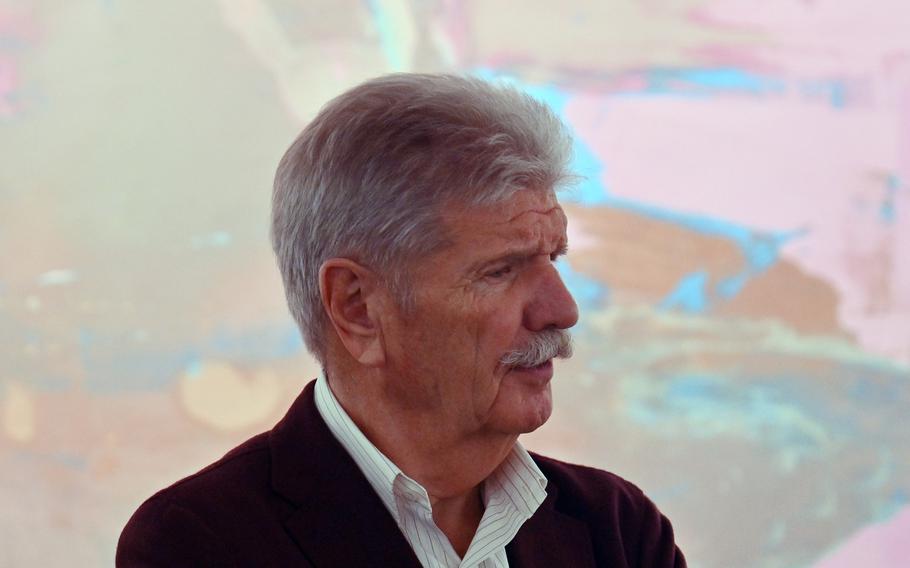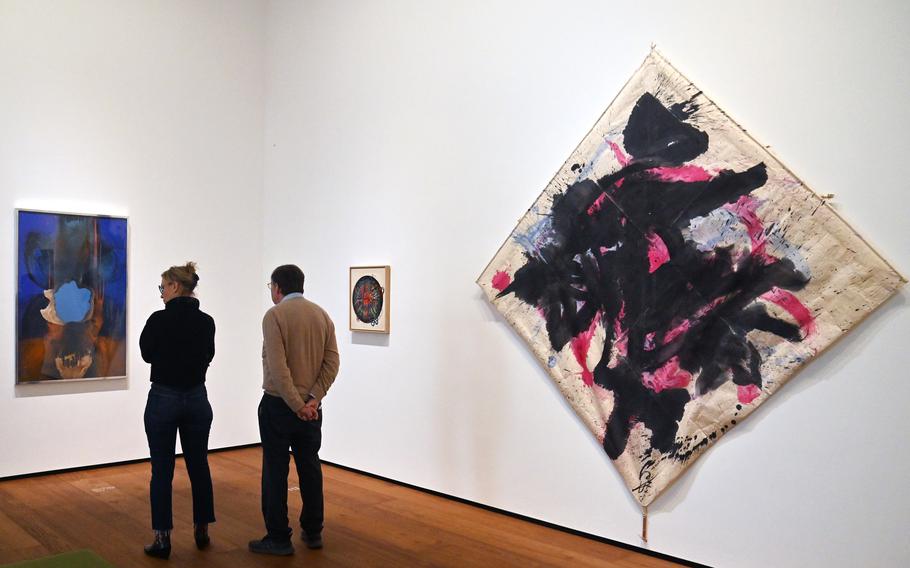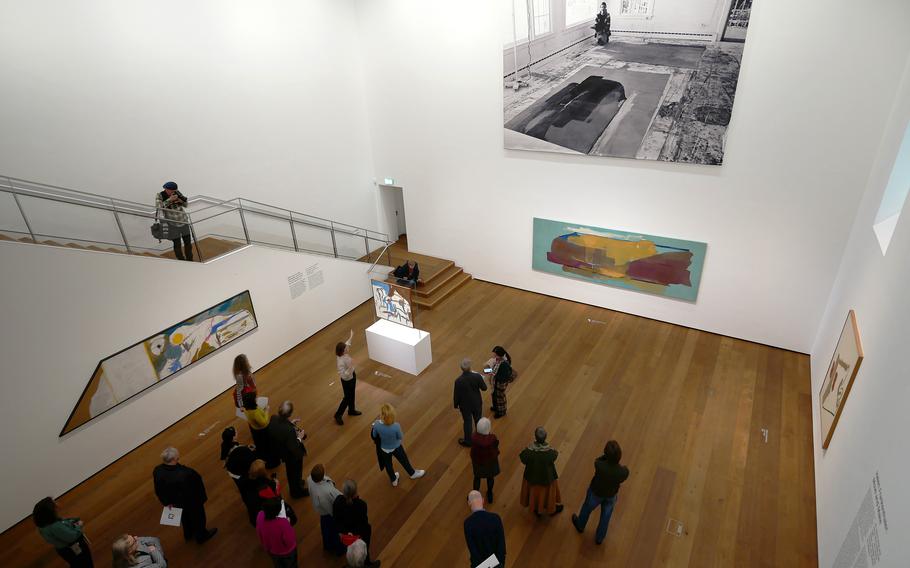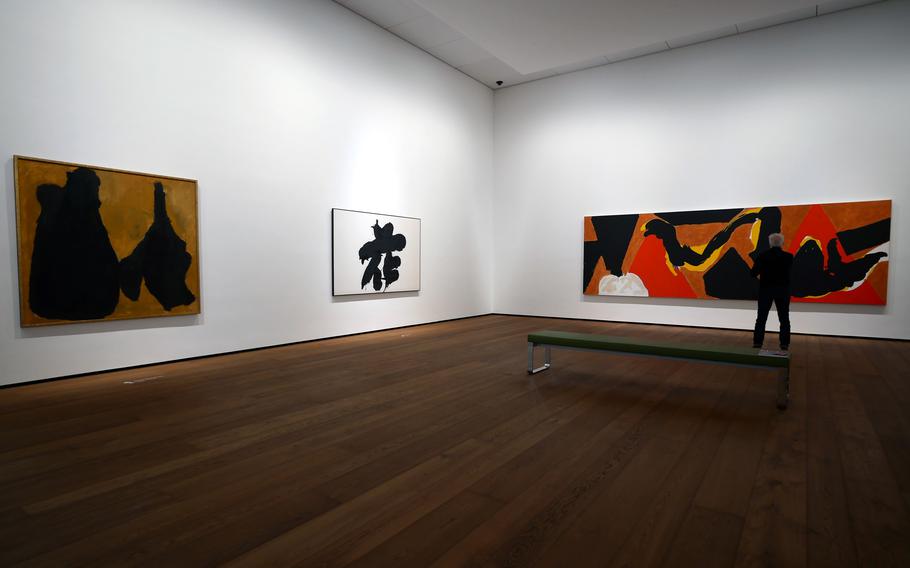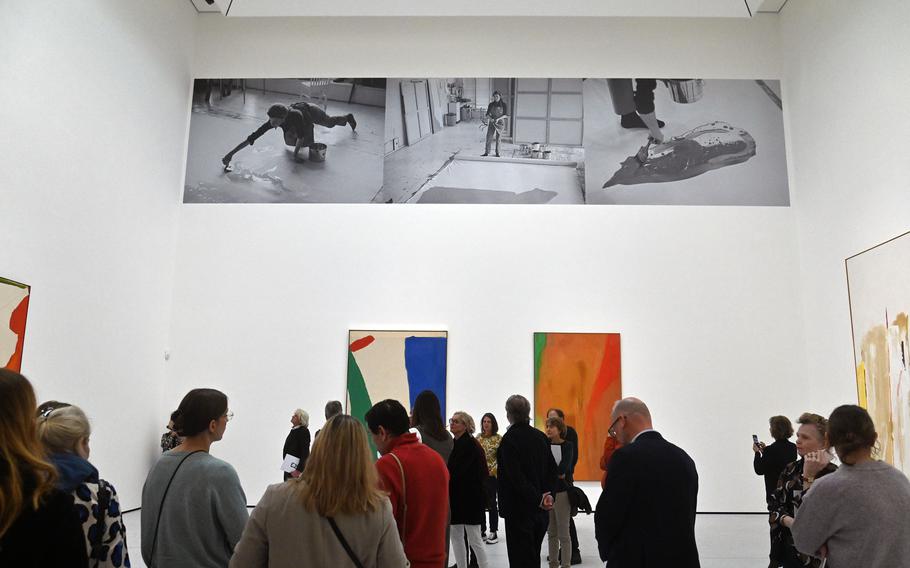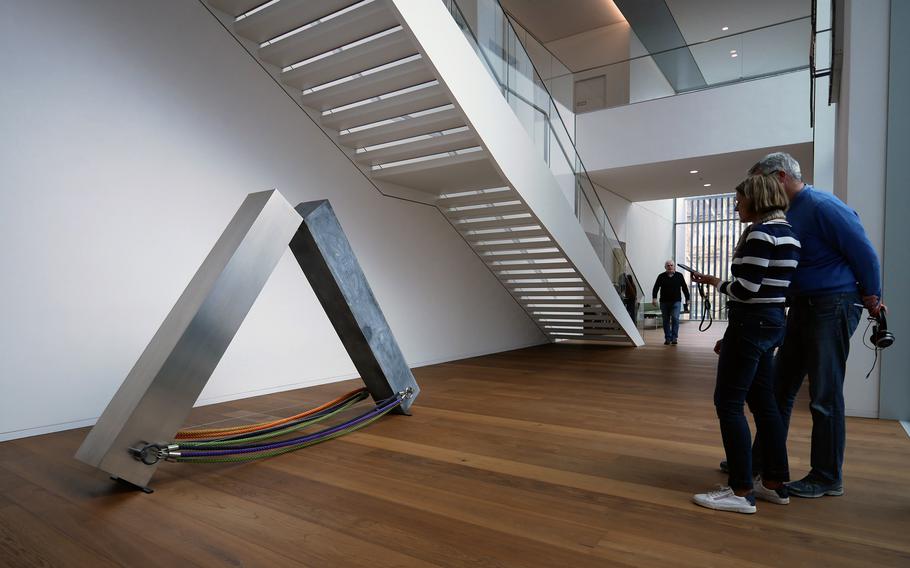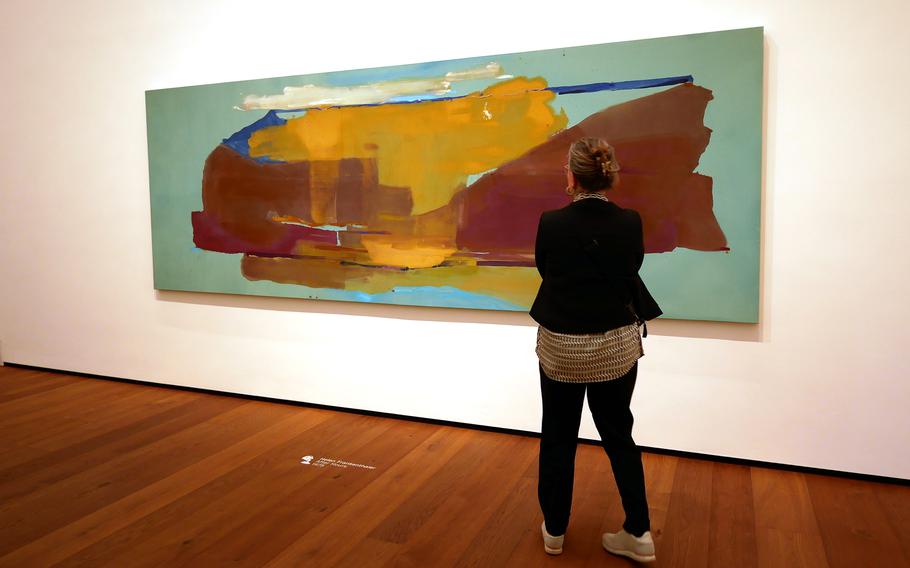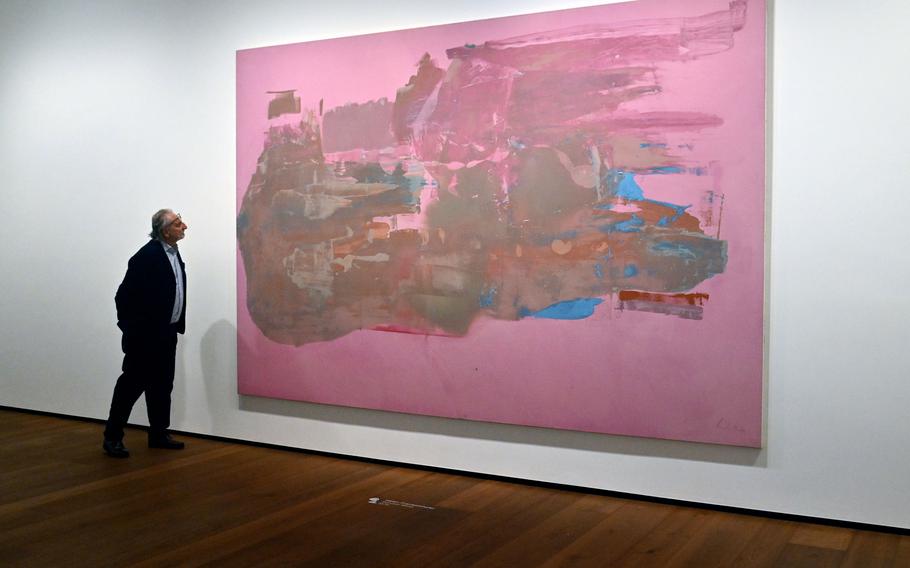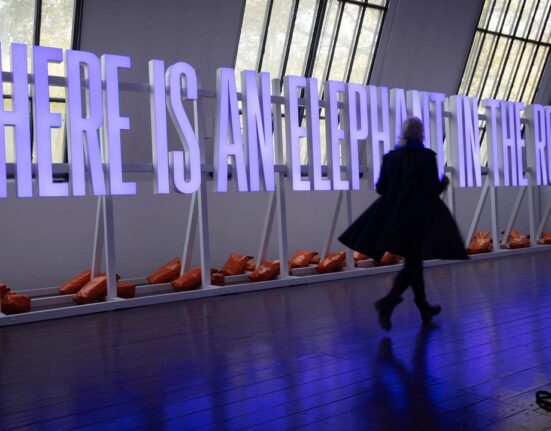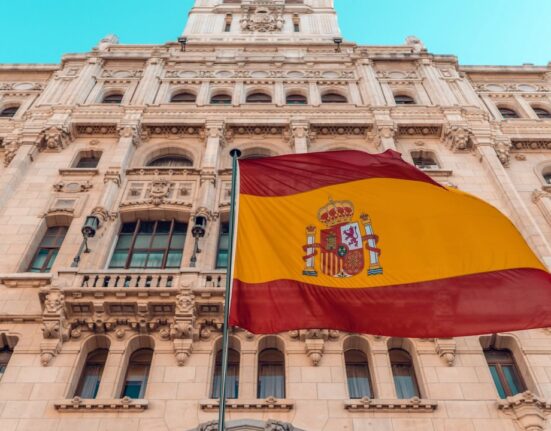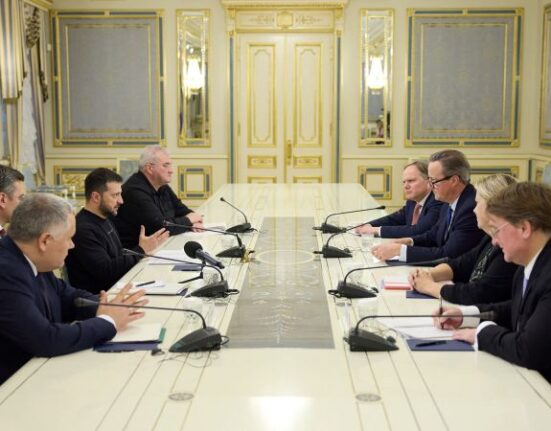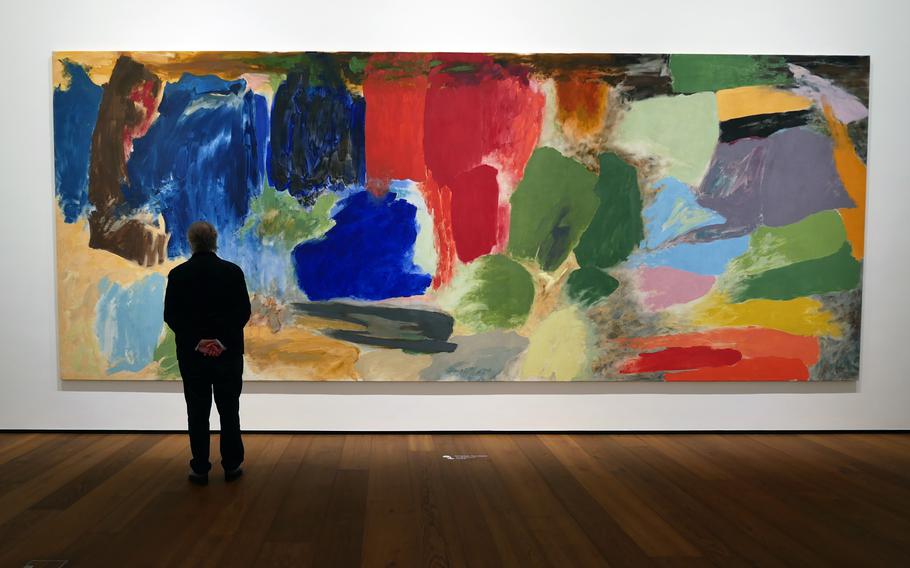
A visitor to Museum Reinhard Ernst looks at “Argonaut,” a 1983 work by Friedel Dzubas. The Wiesbaden, Germany museum displays abstract art that its founder, Reinhard Ernst, collected in the past 30 years. (Michael Abrams/Stars and Stripes)
Reinhard Ernst first came across the work of American artist Helen Frankenthaler during a visit to a Paris gallery in the late 1980s.
The German entrepreneur couldn’t afford the abstract art at the time but was fascinated by it. Instead, he collected works by French and German artists.
By the second decade of the 21st century, Ernst, who made his fortune producing precision gears and drive technology, could afford Frankenthaler’s creations. Many of them. Even while collecting other artists’ work during business trips to the U.S. and Japan, he amassed the largest private collection of Frankenthaler’s art.
Luckily for the public, Ernst is not one to display his collection in a home basement bunker. Through a foundation he established with his wife Sonja, he built the Museum Reinhard Ernst in downtown Wiesbaden, Germany.
Designed by Maki and Associates, headed by the late star architect Fumihiko Maki, it opened in June 2024 and holds Ernst’s collection of abstract art from 1950 to the present.
It recently opened its first temporary art exhibit, “Helen Frankenthaler. Move and More.” It features 38 of the 50 works by the artist in the museum’s collection.
Frankenthaler (1928-2011) was raised in New York City. She studied art in college and by 1950 already had one of her works included in an exhibition. Only a year later she had her first solo exhibit.
On her way to becoming one of the great American artists of the postwar 20th century, she developed the soak-stain technique.
She poured diluted paint onto an untreated canvas and spread the paint over the surface with sponges and brushes. Unlike painting on a wall or easel as most artists did, Frankenthaler rolled out her large, sometimes giant, canvasses on the floor.
The results were colorful works, sometimes muted, sometimes vivid, but almost always intriguing.
At the museum, the works are shown in four rooms solely with Frankenthalers and in one room of the permanent exhibit.
This lets Frankenthaler’s work be exhibited next to her mentors such as Hans Hofmann and Adolph Gottlieb, and her peers, Friedel Dzubas, Lee Krasner and Robert Motherwell, to whom she was married for more than a decade.
The exhibit gets its name from a quote by the artist, “I’d rather think and move and make, than halt,” and it’s clear that there was a lot of moving and making in her works. In two of the rooms, large photos feature Frankenthaler working.
Among the works on display is the oldest Frankenthaler in the collection, “Provincetown Harbor,” from 1950 and the first work acquired by Ernst, “For Hiroshige.”
Other notable works to see are “After Hours” and “Second Wind,” both large paintings full of colors. Compare these to the rather muted colors of “Fenice” and “Moonrise.”
The exhibit runs through Sept. 28.
The permanent exhibit is called “Color is Everything,” and in the room the visitor can compare Frankenthaler’s works “Zarathustra” and “Regatta,” with Gottlieb’s “Two Bars” or Dzubas’ giant “Argonaut.”
Among the other works on display at the museum are, to name just a few, Motherwell’s “Arabesque,” Yuichi Inoue’s “Hana,” Atusko Tomaka’s “Work” and Toshimitsu Imai’s “Formation Stream.”
Some visitors to the museum might ask what the artist is trying to say with his or her works, or how a particular piece was named.
Reinhard Ernst, someone with a passion for the genre, has an answer. With abstract art, “I can see what I want to see.”
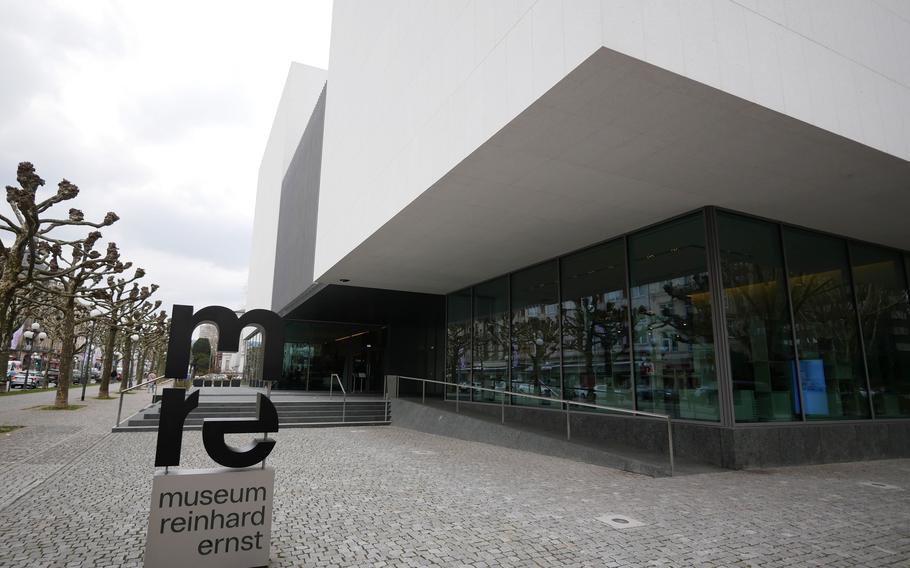
The Museum Reinhard Ernst in Wiesbaden, Germany was designed by Maki and Associates, headed by the late star architect Fumihiko Maki. It opened in June 2024 and holds the abstract art collected by its namesake Reinhard Ernst, a German entrepreneur and patron of the arts. (Michael Abrams/Stars and Stripes)
On the QT
Where: Wilhelmstrasse 1, 65185 Wiesbaden
When: Noon to 6 p.m., Tuesday, Thursday, Friday, Saturday and Sunday; noon to 9 p.m. Wednesday; closed on Monday.
Costs: 14 euros for adults; 12 euros for groups of 10 or more and college students; children and youth up to 18 years of age enter free. The excellent catalog for the Frankenthaler exhibit costs 29.90 euros.
Food: Inside the museum is rue 1 by Gollner’s, an upscale restaurant.
Information: Online: museum-re.de/en


